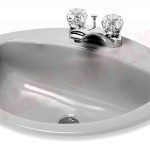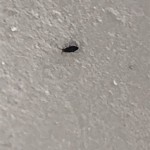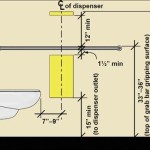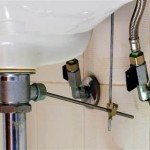How To Clean Bathroom Fan Blades: A Comprehensive Guide
Bathroom exhaust fans are essential for maintaining healthy air quality and preventing moisture buildup, mold growth, and unpleasant odors. These fans work tirelessly to remove humid air after showers or baths. However, over time, they accumulate dust, dirt, and grime, which can reduce their efficiency and potentially impact indoor air quality. Cleaning bathroom fan blades is a necessary maintenance task that can significantly improve the fan's performance and prolong its lifespan. This article provides a detailed, step-by-step guide on how to effectively clean bathroom fan blades.
Safety First: Preparing for the Cleaning Process
Before commencing any cleaning procedure, safety should be the utmost priority. This involves properly preparing the area and ensuring that all necessary precautions are taken to prevent accidents or injuries. Proper preparation ensures a safe and effective cleaning experience.
The first step is to disconnect the power. Locate the circuit breaker that controls the bathroom fan and switch it off. This is crucial to avoid electric shock during the cleaning process. Confirm that the power is off by attempting to turn on the fan switch. If the fan does not start, the power has been successfully disconnected.
Gather the necessary cleaning supplies. This includes a screwdriver (Phillips head or flathead, depending on the fan cover type), a vacuum cleaner with a brush attachment, a stepladder or sturdy stool, a damp cloth or microfiber towel, mild cleaning solution (such as dish soap), and potentially safety glasses and a dust mask. Having all the tools readily available will streamline the cleaning process.
Protect the surrounding area. Place a drop cloth or old towel on the floor directly beneath the fan. This will catch any dust or debris that falls during the cleaning process, preventing messes and simplifying cleanup afterward. Consider wearing safety glasses and a dust mask to protect the eyes and respiratory system from dust and airborne particles.
Step-by-Step Guide to Cleaning Bathroom Fan Blades
With the preparation completed, the cleaning process itself can begin. Each step is designed to ensure a thorough and safe cleaning of the fan blades and surrounding components.
Remove the fan cover. Most bathroom fan covers are held in place by spring clips or screws. If the cover has spring clips, gently pinch them and pull the cover down. If it is secured with screws, use the appropriate screwdriver to remove them. Carefully detach the cover and set it aside for cleaning. Note the orientation of the cover to ensure proper reinstallation later.
Vacuum the fan housing and blades. Using the vacuum cleaner with the brush attachment, carefully vacuum the inside of the fan housing and the fan blades. This will remove loose dust and debris. Hold the vacuum hose close to the blades to maximize suction without actually touching them. Exercise caution to avoid bending or damaging the blades.
Clean the fan blades with a damp cloth. Prepare a mild cleaning solution by mixing a small amount of dish soap with warm water. Dampen the microfiber towel with the solution and gently wipe each fan blade. Pay attention to areas with heavy buildup. For stubborn dirt, allow the cleaning solution to sit on the affected area for a minute or two before wiping. Ensure that the cloth is not overly saturated to prevent water from dripping into the fan motor.
Clean the fan cover. While the fan blades are drying, clean the fan cover. Wipe it down with the same mild cleaning solution used for the blades. Remove any dust, dirt, or grime. If the cover is heavily soiled, it can be soaked in the solution for a few minutes before wiping it clean. Rinse the cover thoroughly with clean water and allow it to air dry completely before reattaching it.
Dry all components thoroughly. Before reassembling the fan, ensure that all components, including the fan blades, fan housing, and fan cover, are completely dry. This will prevent mold growth and ensure the fan operates efficiently. Use a clean, dry cloth to wipe down any remaining moisture. Allow sufficient time for air drying, especially in humid environments.
Reassemble the fan. Once all components are dry, carefully reattach the fan cover. If the cover has spring clips, align them with the slots in the fan housing and push the cover up until the clips snap into place. If the cover is secured with screws, align it properly and tighten the screws until snug. Be careful not to overtighten the screws, as this could damage the cover or the fan housing.
Restore power and test the fan. After reassembling the fan, return to the circuit breaker and switch the power back on. Turn on the bathroom fan switch to test that the fan is functioning correctly. Listen for any unusual noises and ensure that the fan is operating at its normal speed. If the fan does not turn on or makes unusual noises, double-check the connections and ensure that all components are properly installed.
Maintaining Cleanliness: Preventing Future Buildup
Regular cleaning of the bathroom fan is crucial for maintaining its efficiency and longevity. Establishing a routine maintenance schedule can prevent excessive buildup and simplify future cleaning tasks.
Establish a cleaning schedule. Ideally, bathroom fan blades should be cleaned every three to six months, depending on usage and environmental conditions. Bathrooms with frequent showers or high humidity levels may require more frequent cleaning. Mark the cleaning schedule on a calendar or set reminders to ensure that the task is not overlooked.
Improve ventilation habits. Encourage proper ventilation habits by running the bathroom fan during and for at least 20 minutes after showers or baths. This helps to remove moisture from the air and prevent mold growth. Also, ensure that the bathroom door is left open after showering to allow air to circulate freely.
Consider upgrading the fan. If the existing bathroom fan is old, inefficient, or noisy, consider upgrading to a newer model. Modern bathroom fans are often equipped with features such as humidity sensors, which automatically adjust the fan speed based on the humidity level. These fans also tend to be quieter and more energy-efficient, providing better performance and cost savings.
Inspect the fan regularly. Periodically visually inspect the bathroom fan for signs of excessive dust buildup, mold growth, or other issues. This simple check can help identify problems early on and prevent them from escalating. If any issues are detected, address them promptly to maintain the fan's performance and prevent damage.
By following these steps, individuals can effectively clean their bathroom fan blades and maintain a healthy and well-ventilated bathroom environment. Regular maintenance not only improves the fan's performance but also contributes to better indoor air quality and prolongs the fan's lifespan.

How To Clean Bathroom Ceiling Fans Simple Method

How To Clean Bathroom Exhaust Fan Duct Ace Sydney Electricians

How To Clean A Bathroom Extractor Fan Technical Guides Heatandplumb Com

3 Ways To Clean A Bathroom Fan Wikihow

How To Clean Your Bathroom Extractor Fan Homerun Blog

How To Clean A Bathroom Fan Diy Family Handyman

How To Clean The Bathroom Exhaust Fan Metropolitan Electrical Contractors Local Technicians

How To Clean Bathroom Ceiling Fans Simple Method

How To Clean Bathroom Ceiling Fans Simple Method

How To Clean Bathroom Exhaust Fan
Related Posts







